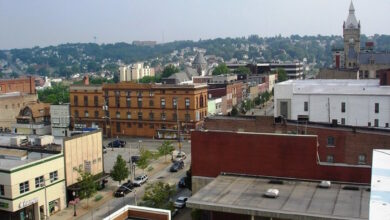Albany: The Historic Capital of New York

Albany is the capital city of New York State, and one of the oldest cities in the United States. It has a rich history, culture, and architecture that reflect its Dutch, British, and American influences. In this article, we will explore some of the facts and features that make Albany a unique and fascinating place to visit.
A Dutch Beginning
Albany was founded by Dutch colonists in 1614, who built a trading post called Fort Nassau on Castle Island, near the present-day Port of Albany. The fort was later replaced by Fort Orange, which became the center of a thriving fur trade with the Native Americans. The settlement around the fort was known as Beverwyck, meaning “beaver district”, because of the abundance of beavers in the area.
In 1664, the British took over New Netherland, the Dutch colony that included Beverwyck, and renamed it Albany, after James, Duke of York and Albany, who later became King James II of England. Albany was granted a city charter by Governor Thomas Dongan in 1686, making it the oldest chartered city in the country.
A Colonial Hub
Albany played an important role in the colonial era, as it was a strategic location for trade, defense, and diplomacy. It was the original eastern terminus of the Erie Canal, which connected the Hudson River to the Great Lakes, and opened up new markets and opportunities for the city. It was also home to some of the earliest railroads in the world, such as the Mohawk and Hudson Railroad, which began operating in 1831.
Albany was also a site of political and social events that shaped the nation’s history. In 1689, it hosted one of the first intercolonial conventions, where representatives from several colonies discussed a system of mutual defense against the French and the Native Americans. In 1754, it hosted the Albany Congress, where Benjamin Franklin proposed a plan for a united colonial government, which was rejected by the British but foreshadowed the later American Revolution. In 1777, it became the state capital of New York, after the British burned down Kingston, the previous capital.
A Modern Metropolis
Today, Albany is a vibrant and diverse city, with a population of about 97,000 people. It is the center of a metropolitan area that includes Troy and Schenectady, and has a combined population of over 800,000 people. It is a hub for education, culture, and government, with many colleges and universities, museums and theaters, and state and federal offices.
Some of the notable attractions in Albany include the Empire State Plaza, a complex of modern buildings that house the state capitol, the governor’s mansion, and various agencies and courts. The plaza also features a performing arts center, a convention center, a museum, and a memorial to the victims of the 9/11 attacks. Another landmark is the Albany Institute of History and Art, which has a collection of over 20,000 objects related to the history and culture of the Hudson Valley region.
Albany is also known for its festivals and events, such as the Tulip Festival, which celebrates the city’s Dutch heritage and features the crowning of a Tulip Queen and a street scrubbing ceremony. Other popular events include the Alive at Five concerts, the Capital Pride Parade, the Albany Jazz Festival, and the Latin Fest.
Conclusion
Albany is a city that has a lot to offer to visitors and residents alike. It is a place where history meets modernity, where culture and diversity flourish, and where the spirit of innovation and collaboration continues. Albany is more than just the capital of New York, it is a capital of history, culture, and progress.

